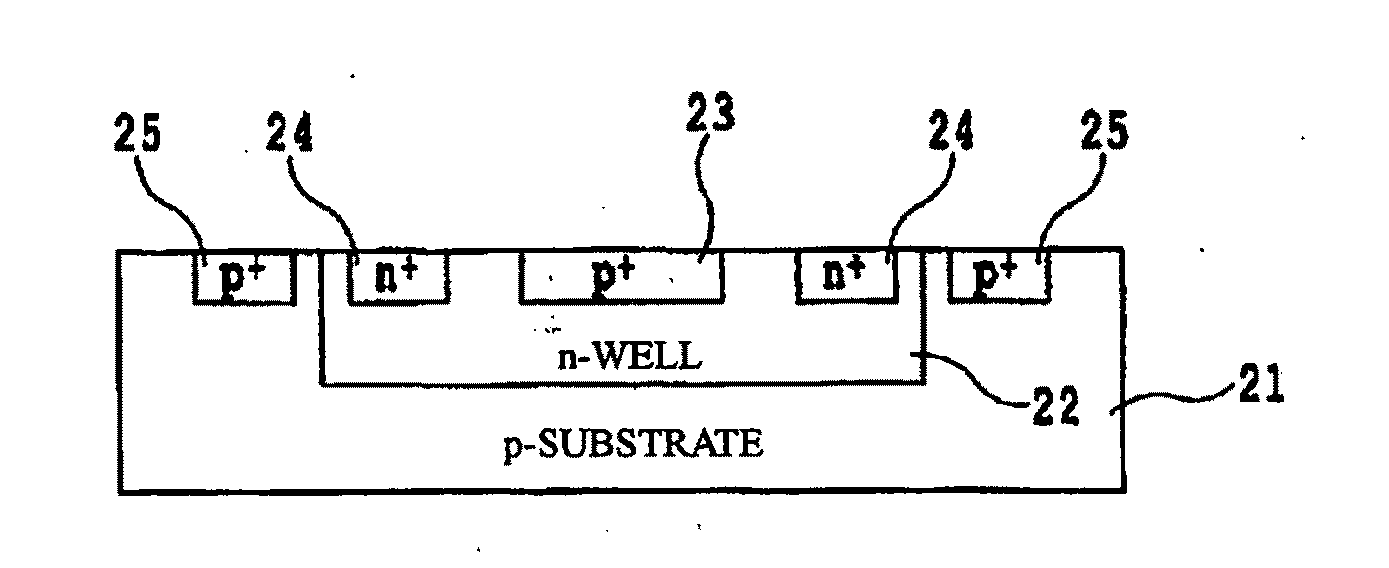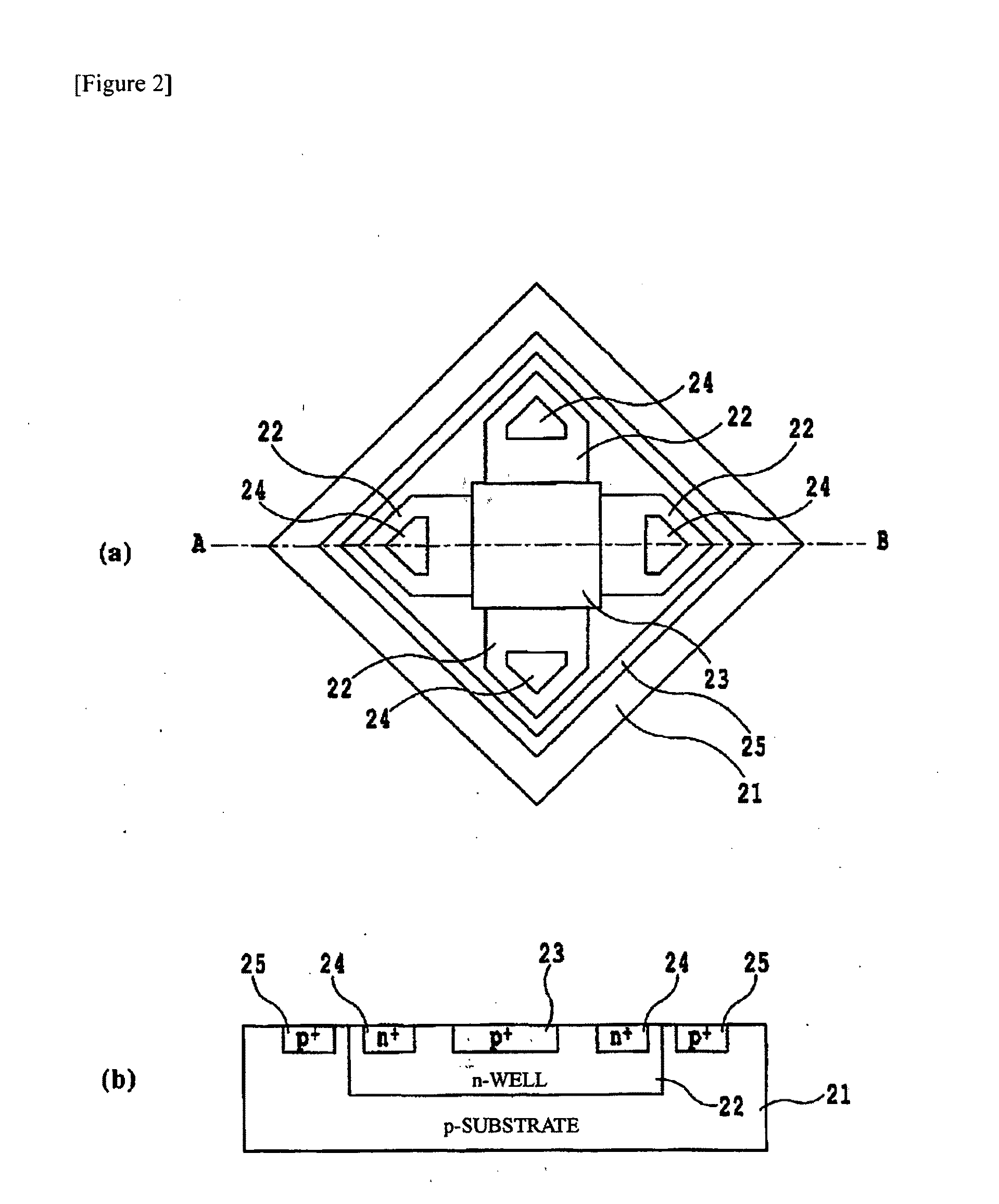Hall Element and Magnetic Sensor
a technology of magnetic sensor and hall element, which is applied in the field of hall element and magnetic sensor, can solve the problems of s/n ratio, preventing the practical use of such a monolithic azimuth sensor, and complex construction, and achieves improved s/n ratio per current, high breakdown voltage, and high sensitivity.
- Summary
- Abstract
- Description
- Claims
- Application Information
AI Technical Summary
Benefits of technology
Problems solved by technology
Method used
Image
Examples
example 1
[0062]FIGS. 2(a) and 2(b) are each a schematic view for illustrating Example 1 of a Hall element according to the present invention; FIG. 2(a) is a top plan view and FIG. 2(b) is a sectional view taken on line A-B of FIG. 2(a). Reference numeral 21 designates a p-type semiconductor substrate layer, 21a designates a p-type substrate region, 22 designates an n-type impurity region (n-well), 23 designates a p-type impurity region (p+ diffusion layer), 24 designates an n-type region (n+ diffusion layer), 25 designates a p-type region (p+ diffusion layer), 26 designates a magnetic sensing part, and 27 designates an electrode.
[0063]The Hall element of the present invention includes the p-type semiconductor substrate layer 21 composed of p-type silicon, and the n-type impurity region 22 located in a surface of the p-type semiconductor substrate layer 21. The n-type impurity region 22 functions as the magnetic sensing part 26.
[0064]The p-type impurity region 23 is located in a surface of th...
example 2
[0078]FIG. 7 is a schematic sectional view taken on line A-B of FIG. 2(a) for illustrating Example 2 of a Hall element according to the present invention. In FIG. 7, reference numeral 28 designates a depletion layer, and reference characters C1, C2 and C3 designate junction capacitances. Other reference numerals are each the same as used in FIG. 2(b).
[0079]In Example 2, a wide region of the depletion layer 28 is provided at the interface between the n-type impurity region 22 and the p-type semiconductor substrate layer 21. That is, this arrangement allows a depletion layer width to increase at the interface between the low-concentration p-type semiconductor substrate layer 21 and the low-concentration n-well 22. For this reason, the junction capacitances C1, C2 and C3 are reduced, so that coupling noise from the p-type semiconductor layer 21 is reduced, thus resulting in an improved S / N ratio. Further, an improvement in breakdown voltage ensures high reliability and, hence, it is po...
PUM
 Login to View More
Login to View More Abstract
Description
Claims
Application Information
 Login to View More
Login to View More - R&D
- Intellectual Property
- Life Sciences
- Materials
- Tech Scout
- Unparalleled Data Quality
- Higher Quality Content
- 60% Fewer Hallucinations
Browse by: Latest US Patents, China's latest patents, Technical Efficacy Thesaurus, Application Domain, Technology Topic, Popular Technical Reports.
© 2025 PatSnap. All rights reserved.Legal|Privacy policy|Modern Slavery Act Transparency Statement|Sitemap|About US| Contact US: help@patsnap.com



